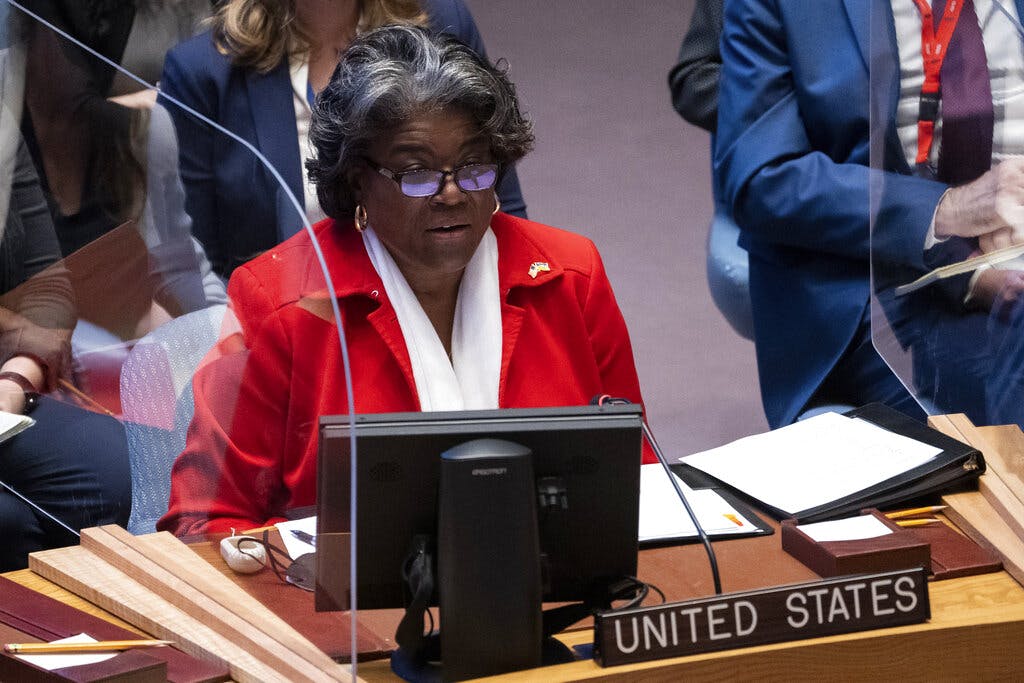At the United Nations, America Suddenly Backs a Measure To Dilute Its Own Veto Power
Despite recent victories, diplomats warn that America would be wise to study the history of the mechanism that allows moving to the General Assembly after a Security Council veto.

America is embracing a new measure at the United Nations that is likely to dilute its own veto power in the Security Council, and, if pursued, would be used mostly against America.
Initiated by a group of midsize UN members led by tiny Lichtenstein, the new measure would institutionalize an existing mechanism created in the Cold War era.
That mechanism, known as Uniting for Peace, allows the 193 members of the General Assembly to address issues normally assigned to the Security Council’s 15 members, but only after one of its five permanent members vetoes a resolution.
Until now, a member state needed to call a special session at the Assembly once a Council member cast a veto. The veto power is vested by the treaty known as the United Nations Charter in five countries, the Soviet Union, the Republic of China, Britain, France, and America.
The new resolution would mandate convening the Assembly each time a veto is wielded. “This innovative measure would automatically convene a meeting of the General Assembly after a veto has been cast in the Security Council,” says the American envoy here, Linda Thomas-Greenfield.
Ms. Thomas-Greenfield’s zeal is following several Russian vetoes of Western proposals at the Council, after which she successfully convened the Assembly. An overwhelming majority there twice condemned Moscow’s invasion of Ukraine. A third Assembly session voted, by a two-third majority, to suspend Russia’s membership in another UN body, the Geneva-based Human Rights Council.
Despite those recent victories, diplomats warn that America would be wise to study the history of the mechanism that allows moving to the General Assembly after a Security Council veto. Mostly dormant in the post-Cold War era, it was solely used to condemn American vetoes cast on biased resolutions against Israel.
According to the UN Charter’s Article 24, the Security Council has the “primary responsibility for the maintenance of international peace and security” around the globe. The General Assembly, according to Article 11, “may make recommendations with regard to such principles to the Members or to the Security Council.”
The Assembly, where no member has the veto power, can only “recommend.” In contrast, the 15-member Security Council has the power to mandate action, including global sanctions and even war. In 1950, the council condemned Communist North Korea’s invasion of the free South and authorized an American-led military force to battle the invader.
The veto power at the Council, however, has made such resolutions a rarity. The Korean War resolution was made possible only because at the time the Soviet Union was boycotting the UN — it opposed the free Republic of China’s Council seat, which today is occupied by Communist China.
Except for that short period of diplomatic pouting, the Cold War era was marked by frequent Security Council vetoes. To ease tensions, the General Assembly in 1950 passed resolution 377. According to that act, known as Uniting for Peace, once a veto is cast at the Security Council the Assembly “shall consider the matter immediately with the view to making recommendations to Members.”
The Uniting for Peace mechanism was frequently used by both sides of the Cold War. The West blocked Soviet condemnation of the 1956 Suez war, and the Reds vetoed condemnation of that year’s Soviet invasion of Hungary. The Assembly was then convened, and did so often for years afterward.
In 1981 America, France, and Britain vetoed a Council resolution on South Africa’s invasion of Namibia. That was the last time Uniting for Peace was activated. After that it was mostly forgotten — until an enterprising Palestinian observer at Turtle Bay, Yasser Arafat’s nephew Nasser al Kidwa, rediscovered it in 1997.
That year America vetoed a proposed Council resolution demanding Israel refrain from building a new neighborhood in Jerusalem, Har Homa. Mr. al Kidwa dusted off the old Council-to-Assembly maneuver and, with the aid of Arab allies, convened an emergency session at the Assembly.
With its automatic pro-Palestinian majority, the Assembly then sent the matter to the International Court of Justice, complete with instructions on how the court’s verdict should be worded. The court in The Hague obeyed, declaring Har Homa illegal. The neighborhood has since been built and the kangaroo court’s verdict was largely forgotten.
Yet, the special session that Mr. al Kidwa convened in 1997 never died, as the resolution it produced ended with a vow to “remain seized of the matter.” The Palestinians fell in love with the mechanism, proposing ever more unacceptable Security Council resolutions.
Once America cast its veto, the Assembly was recalled for yet another non-binding round of condemnation of Israel and its sole defender in Turtle Bay, America.
All in all, the Palestinians used this maneuver 15 times, complete with heated anti-Israel and anti-American speeches at the Assembly. As Uniting for Peace became solely a Palestinian domain, even sympathetic diplomats rolled their eyes each time another special session was recalled.
Then Russia invaded Ukraine. Rather than heeding Kyiv’s plea for revoking Russia’s unratified inheritance of the USSR’s UN seat, America embraced the old, ineffectual Cold War-era mechanism. Now, after scoring three largely symbolic victories at the Assembly, America is enthusiastically co-sponsoring a resolution that would make that mechanism automatic.
Diluting the top world players’ ability to nix resolutions that harm their interests has long been the goal of many UN players. Today’s attempt at poking Russia in the eye, however, will, as in the past, haunt America for years to come.

